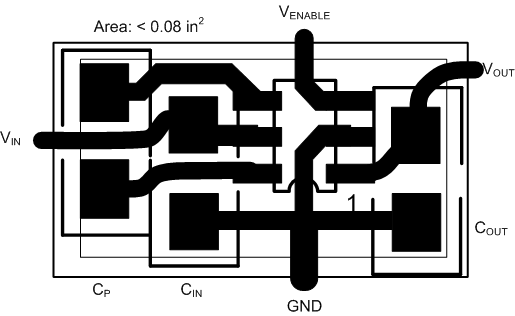SBAS221H December 2001 – October 2015 REG71050 , REG71055
PRODUCTION DATA.
- 1 Features
- 2 Applications
- 3 Description
- 4 Revision History
- 5 Device Comparison Table
- 6 Pin Configuration and Functions
- 7 Specifications
- 8 Detailed Description
- 9 Application and Implementation
- 10Power Supply Recommendations
- 11Layout
- 12Device and Documentation Support
- 13Mechanical, Packaging, and Orderable Information
Package Options
Mechanical Data (Package|Pins)
Thermal pad, mechanical data (Package|Pins)
- DRV|6
Orderable Information
11 Layout
11.1 Layout Guidelines
Large transient currents flow in the VIN, VOUT, and GND traces. To minimize both input and output ripple, keep the capacitors as close as possible to the regulator using short, direct circuit traces.
A suggested printed-circuit-board (PCB) routing is shown in Figure 24. The trace lengths from the input and output capacitors have been kept as short as possible.
11.2 Layout Example
 Figure 24. Suggested PCB Design for Minimum Ripple
Figure 24. Suggested PCB Design for Minimum Ripple